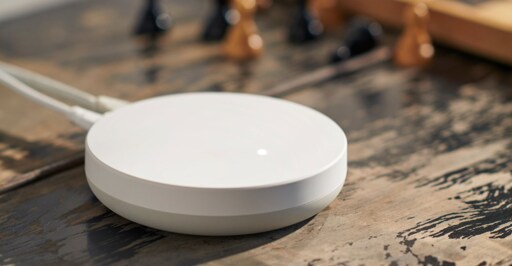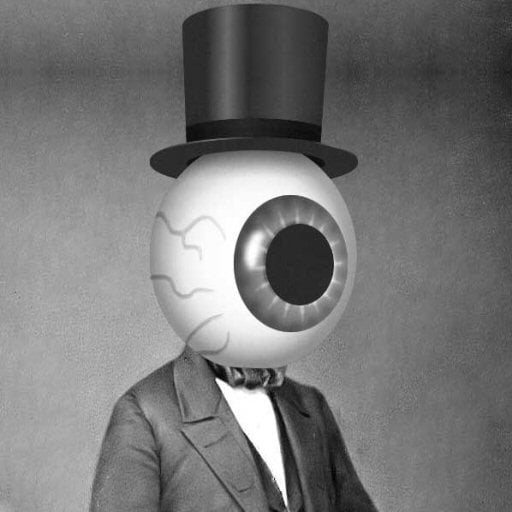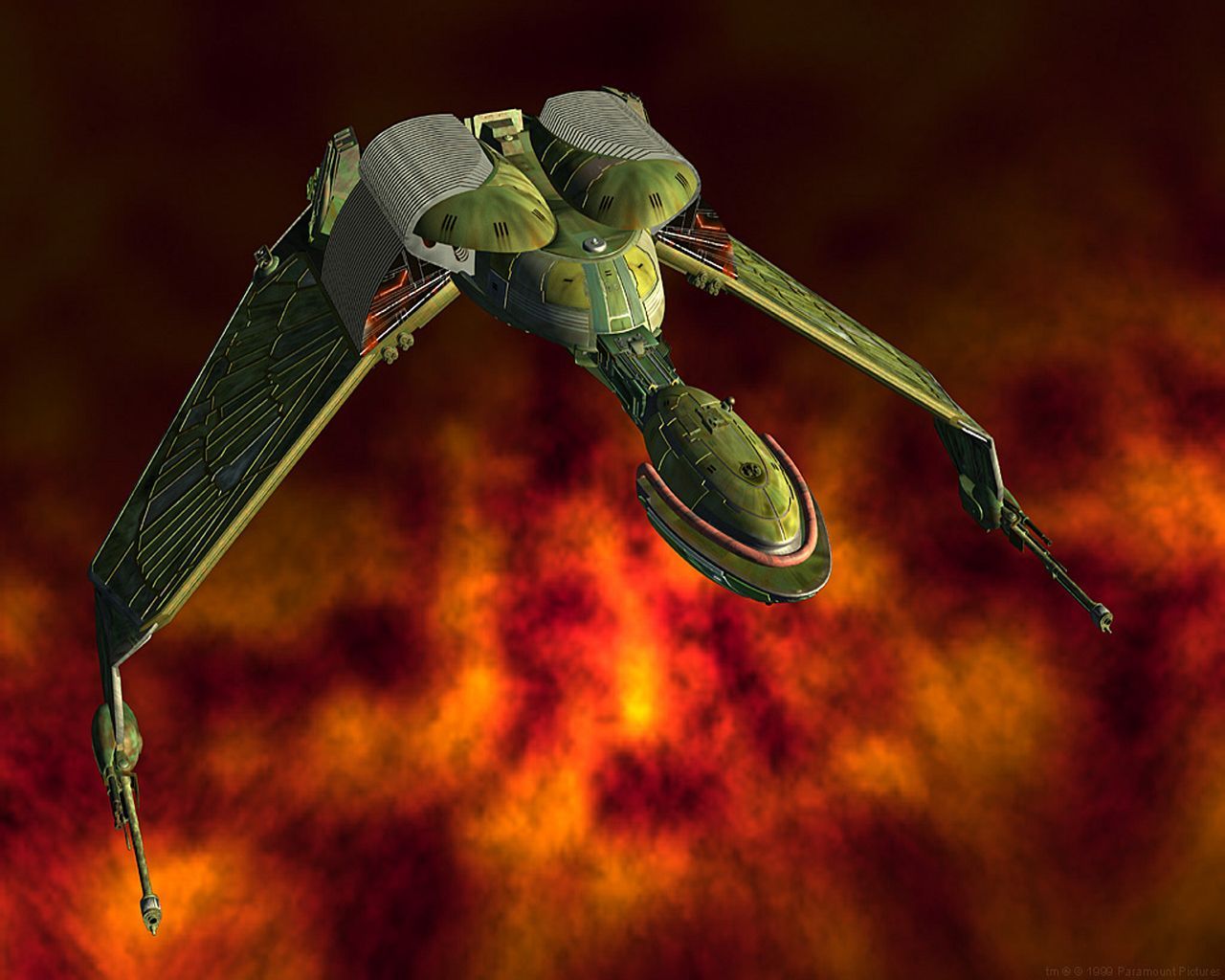Man there are way too many IoT standards. What’s the difference between these two? How do they each compare to Matter?
Thread is a wireless standard meant to sit next to Bluetooth and WiFi.
Matter is a home automation protocol can that be used over Thread or WiFi. Ideal Matter devices use Thread instead of WiFi because running a bunch of home devices like light bulbs or switches on your WiFi is a recipe for disaster.
Matter is important because it provides native compatibility among different platforms.
What kind of disaster specifically? I hear everyone discouraging from using WiFi for home devices, but never understood what the actual risks are.
Let’s say your lightbulb(s) become comprised. A bad actor now has a toehold into your network.
Maybe they run a spam relay through the bulb. Maybe they attack your network by attacking the printer that hasn’t had a firmware update in years.
Point is, there’s someone with access to your network that isn’t you.
https://old.reddit.com/r/Ubiquiti/comments/1fjspoc/what_is_the_point_of_having_a_separate_devices/
Right, thanks. But this can be easily resolved by:
- Removing devices’ access to WAN, which also vastly reduces the external actor’s ability to compromise them in the first place.
- Isolating devices from each other with internal firewall rules, allowing them to only interact with the hub host. Is this correct, or am I missing something?
Sounds like an admin job I don’t want to do.
With a good router, it’s not that hard to do. But even then it took me a long time to get around to setting up the separate network, and I don’t think I’ve migrated all of my devices over to it still (some got moved, new ones go there, but there are some older devices still sitting on the original network). So, yeah, there’s definitely extra effort, and it’s not really fun like getting that new smart device integrated. I will say the stuff on that network works perfectly - I haven’t noticed any side effects.
Oh I did allow them access to the pool ntp server so they can pick up the correct time, and some require temporary access to the internet while setting up (the linknlink RF device needed it to download the Home assistant version of their firmware, for example).
ZigBee/Thread are just better for this, you’re protected without doing anything.
Requirements like the ones you listed above make widespread adoption impossible, short of forcing routers to have a separate IoT network and forcing devices to use only that, with all the issues that may prop up along the way.
Good luck explaining how to do any of this to my parents, for example. For someone with a technical background that’s feasible, for someone with an it background it’s even easy. For the other 90 or 95% of people who are actually supposed to buy and use these things, it isn’t. They don’t even know something like this can be done, let alone that it should be done.
But that is not a fault of WiFi as a medium, but rather of the ecosystem of devices as we know them. Some company might launch a “Home Automation WiFi” product, which would be simply a home hub with a builtin WiFi router pre-configured with the recommended security settings. Zero config nor admin work required, just buy the right (hypothetical) hub.
Though the real problem is that every other device relies on cloud connectivity, which highly limits such hubs effectiveness. Again, that isn’t an inherent fault of how WiFi works, rather I see it as a problem with the ecosystem and how consumers want their devices to work without any hub. Hopefully with more local-only devices that trend can still be reversed.
But that is not a fault of WiFi as a medium, …
but it is a fault of WiFi as a choice for that application. Just because it does wireless communication doesn’t mean it’s suited for any application that needs a wireless protocol. Using it for very-low traffic applications is simply not what it was designed to do, and it has significant negative effects if you do. Any device you add basically slows down any other device by a bit. And wifi network you add in a physical area decreases the effectiveness of all other wifi networks in it’s vicinity. In even medium densly populated areas, wifi is already borderline unusable due to congestion. Your proposed (dedicated) hub is a good idea for network isolation, assuming it’s designed and configured correctly, but that also comes with more and frankly just as bad security implications, just different ones. To be clear, having like a light bulb or two wifi is a fine choice. For 50 or a whole smart home network, it no longer is.
Both Zigbee and Matter do not rely on cloud connectivity as a protocol, though many of the manufacturers implementations do effectly add that on top: you get the exact solution you propose here as well. At least with these standards you can control everyhing locally, if you want to, and you don’t congest the spectrum nearly as much as wifi does.
Sounds like homework
firewall rules? who cares about firewall rules if the switch still forwards packets to the printer?
firewall rules only work on end devices, and routers when the destination is in a different subnet and broadcast domain.
I see someone replied about security. But I was just taking about stability.
Most people don’t have super beefy wifi routers. Many have whatever shit their ISP sent them. These are fine for your average number of laptops and phones, etc. but if you then throw on 10 more 2.4GHz WiFi IOT devices, you are probally going to run into devices randomly dropping off the wifi, etc.
Additionally, wifi is usually chosen over other protocols by manufacturers due to the cost of hardware and development. So they are often lower quality. (This is only one reason)
But sure, if you have a super awesome 2.4GHz wifi setup and high quality wifi devices, maybe things will work out just fine. But my personal experience with WiFi tells me I shouldn’t clutter my WiFi.
Also, if you were curious, yes: almost all WiFi IOT devices are 2.4GHz only.
This sort of makes it sound like the advantage of Thread is merely that it’s new, and therefore nobody will be affected by having a poor pre-existing Thread setup. If ISPs were sending people Zigbee hubs, it sure would be the cheapest shit available, which could very well translate to similarly terrible Zigbee performance.
I see your point, but there should be much more merit to the specialized IoT protocols than just that nobody has yet flooded the market with terrible Thread/Zigbee devices.
I’m not sure manufacturers choose WiFi because of hardware costs. There are often other reasons (some good, some terrible) for this choice, but I’m certain Zigbee support has to be cheaper; having disassembled plenty of such devices it’s almost always a dedicated IC and a tiny PCB trace for an antenna. WiFi support requires a fairly complete TCP/IP stack implementation, basic certificate management etc. which will inevitably require a small SoC; and while prebuilt solutions are plentiful, Zigbee alternatives are an order of magnitude cheaper.
I can imagine software development costs being lower, though, given how every other programmer knows a fair deal about TCP/IP networking, while good comprehension of dedicated IoT protocols is a much rarer skill, there are also much less community resources and open-source solutions available etc.
Thread is the replacement for zigbee.
It’s zigbee plus more features.
There is nothing zigbee does better than thread.
Lower power usage, ipv6, standard tls security, not proprietary, etc.
Does Thread support pairing two or more devices so they can control each other directly without going through the coordinator? I do that a bit with my Zigbee network.
I never meant to imply that Thread was the only solution to WiFi based IOT being bad. Just that it is a forward looking choice that has interoperable support from the dominant computing platforms. This is why IKEA is moving to it.
2.4GHz*
Whoops! Fixed.
Thread is a bit more power efficient, which matters for battery powered devices that aren’t connected to permanent power and don’t need to transmit significant data, like door locks, temperature/humidity sensors, things like that. A full wifi networking chip would consume a lot more power for an always-on device.
There are also performance implications (a Zigbee coordinator can easily handle 100 devices, while many routers would struggle with that amount of clients), power saving (especially for battery powered sensors) - some Zigbee sensors can last years on a single coin cell battery.
Dishonest question, your following comments show you clearly know the common points of these discussions.
There’s no arguing that using WiFi for this purpose is an obstacle to widespread adoption and a security risk, no matter how well you yourself are handling it.
There’s also the technical advantage of those IoT networks being meshed by design, whereas expanding a WiFi network with mesh functionality often carries challenges.
I may know some answers, but I don’t have a full picture, and I wish to complete my understanding by learning others’ perspectives and what they find most important about this choice of protocols. Thank you for sharing yours.
An important difference between thread and zigbee/wi-fi I’m not seeing mentioned is that all thread devices automesh in a hub/spoke model as long as they’re not battery powered. So your light bulbs, plugs, etc all become extenders and part of a self healing mesh network without a single point of failure. For me it works better than Zigbee for this reason.
Zigbee does that too tho, right?
The wiki on zigbee says so at least
Pretty sure than an underlying feature of both zigbee and zwave.
They’re different in their implementation. Zigbee automesh is more of a centralized router-hub model with self healing relying on routing tables. This caused significant issues for me. Thread is true automesh with all devices acting as a hub in a hub/spoke model, so there’s no centralized routing table to act as a single point of failure.
Yes, Thread serves similar functionality to Zigbee, to the extent that some people describe it as Zigbee 2.0.
However it’s a new protocol for a new standard, that has backing from all the big names in home automation, including Apple, Amazon, Google.
Zigbee is a great protocol. Thread will bring better connectivity for the future (we hope)
I exclusively use ZigBee. It automeshes.
Thread also works on the 2.4 GHz range but can utilize sub ranges of 868 in Europe and 915 in north America. The 868 and 915 GHz ranges are what LoRa operates on and provides a much greater range for low data rate transmissions.
In fact Meshtastic operates on LoRa on 915 here in the U.S. and I have a node in my second floor window with a 3db antenna and I have been able to message both ways up to 3 blocks away.
Long story short, utilizing 868 and 915 in these devices will make dead spots a thing of the past within a home, even with their lower gain internal antennas.
Thread is a network layer thing, comparable to WiFi or Bluetooth. Matter is an application later thing, comparable to HomeKit or Google home.
Zigbee is both network and application layer.
This article has a decent overview https://www.smarthomeperfected.com/zigbee-vs-thread/
Thread works with matter, these devices will use Matter over Thread.
I am pretty happy with zigbee so far. Is that a good thing? I haven‘t done anything with matter so far.
It’s just a technological step forward. Thread was designed from the ground up as an IPv6 protocol. Honestly, this kind of move is coming later than would have been ideal, given the massive growth in IoT devices.
Yeah so far it doesn’t matter because zigbee and zwave still work fine.
it doesn’t matter
Hehe.
Anyway, I am also completely on Zigbee. While I like the concept of Matter over Thread, I wouldn’t want to switch, because it will start with a too small network to cover a good distance and if I start replacing Zigbee devices, I effectively sabotage that network as well. So my only move would be to replace all Zigbee with Matter/Thread devices. And that seems insane. So I hope I keep getting new Zigbee devices for a while.
I don’t see why you can’t keep your Zigbee network and start up a new Thread/Matter one. They should be fine to work together! Your Zigbee stuff will work in 20 years, besides component failure.
@bdonvr @aksdb One zigbee device replaced by a thread device means that one node is removed from the zigbee network, making it smaller. Since it’s a mesh network it will become less robust as a result. Likewise, the initial thread network will be very sparsely populated until a sufficient amount of devices has been added to it.
That’s fair, though you could leave a zigbee router plugged in to bridge things even if you don’t really need the device for example a smart plug.
The other disadvantage is that for a zigbee device to control a matter device it will have to route through your home assistant/smart home hub instead of being able to pair a switch directly to lights for example with zigbee.
@arschflugkoerper@feddit.org I have nothing useful to contribute, but I fucking love your username. Thank you for the smirk you gave me, have a nice evening mein Genosse 👋
Tja
thanks lol
I agree, great name!
I am just getting started on this journey but zigbee seems great and I like that it works fine even if the wifi goes down. I’m not sure what the drawbacks are or the benefits of Matter.
matter and thread are different things fyi…
thread uses the same wireless communication as zigbee (zigbee has other stuff on top of it), so is a low power wireless protocol
matter is the data format that devices use to communicate on top of an IP-based network like wifi or thread. it’s meant to standardise all these competing “works with google” “works with alexa” “homekit compatible”: if it works with matter, it should work with any coordinator that has matter compatibility (which all the big ones do these days)
thread will work great if the wifi is down - same as zigbee!
matter also (afaik) forces local devices: your coordinator (a homepod, alexa, etc) talks directly to the device without going through the internet. again, same as zigbee
Thanks for the explainer, that last point is really great actually and I’m surprised that Amazon/Google etc are pushing for Matter if the data isn’t sent to the internet.
well your coordinator gets to end whatever it likes wherever it likes but the devices themselves communicate over your internal network so everything should be much snappier
me either, why do we need yet another standard?
All of the major platform holders agreed to come together and interoperate with this one. And like others said, it supports IPv6.
Still yet another standard, but it’s one that’s not controlled by a single vendor. Its setup to be more like WiFi and Bluetooth than any other standard has been in the past. IMO.
and worth noting as well that thread is only kinda another standard: it uses the same wireless communication as zigbee does
And Matter is modeled after HomeKit.
It reminds me of how the MP4 container that became a standard is modeled after the MOV container.
It’s common for standards backed by consortiums to be modeled after something that is already successfully achieving the goals of the system.
- Thread and Zigbee use the same physical layer and MAC layer (IEEE 802.15.4), so in most case it can use the same hardware and just with different firmware (if manufacturer want).
There is even a project to run both Zigbee coordinator and Thread border router on the same chip. It works! Although it causes some issue so Home Assistant no longer recommand this “multiprotocol” way, but this is a strong demonstration of the interchangeability between Zigbee and Thread. - Thread Group members is almost the same companies who found Connectivity Standards Alliance (former Zigbee Alliance). When Connected Home over IP (CHIP) project was renamd to Matter at 2019, they create Thread Group to unify the home connectivity: Only use one network layer named IPv6 and one application layer named Matter. Zigbee can’t reach this target since it use its own network layer and application layer. So they invent Thread, which still based on IEEE 802.15.4, but with IPv6 as network layer and can transport Matter on it.
- Thread and Zigbee use the same physical layer and MAC layer (IEEE 802.15.4), so in most case it can use the same hardware and just with different firmware (if manufacturer want).
Crap. I use pretty much exclusively Ikea stuff with my Home Assistant
It’s not like it’ll stop working once this is introduced
No, but going forward you’ll need another antenna on your server, and build with a new kind of devices.
I just bought the last thing I wanted from them and finally moved to their infrastructure. Like, yesterday. Welp, I hope I don’t have to change anything ever again.
It makes sense. Hopefully it’s more reliable than my Zigbee devices. I constantly have to power cycle devices made by a variety of manufacturers to get them to register again. And I’ve tried more than a few zigbee hubs. Can’t say I’m a fan.
Check interference with wifi signals wifi on channel 1 and zigbee on channel 25 gives you the most separation. As long as a neighbor doesn’t blast on wifi channel 11.
There is also software compatibility, I found hue to be the most stable for routers. Osram was terrible, recent firmware made it okay.
I’m in literally the middle of nowhere, the next nearest house is 4 miles away and I’m not even connected to the grid. If there’s a wifi signal detectable, it’ll be mine. So I’ve shifted frequencies around trying to get it to stabilize, with little luck. I’ve primarily been using Sonoff, Aqara, Ikea and SMLight, and hubs from each of them.
Honestly, I’ve been migrating to zwave since I don’t seem to have issue with anything I use on that protocol.
Aqara (specially older devices) are known for being temperamental and not playing well with other hubs/devices. If you have each manufacturer on its own hub, make sure they are using separate channels. If everything else fails, 2.4GHz is also used for Bluetooth, microwaves and other, maybe your location has noise on that band,
Z-Wave is using lower bands (800-900mhz depending on location) and certifying the devices better for software compatibility. It’s a fine solution as if it works for you, any limitations are basically theoretical (like the 200 devices).
I’m using zigbee2mqtt, I’ve noticed that leaving things alone for a while helps with network stability.
I don’t use third party hubs, everything is connected to the z2m coordinator.
I’ve ditched pretty much all Aqara devices as they have problems getting their messages relayed, the best alternative was creating a separate network just for them, I did that for a while but then I decided to just replace them.
Never had this with ZigBee, one hub lots of different devices. Had to switch hub to USB2 at beginning to reduce interference but after that smooth sailing.
Same, I have about 40 devices on my network and it works great
Isn’t the HA cloud dongle able to do both because they’re on the same 2.4 gigahertz or whatever?
The dual stack firmware was deprecated because of issues, I believe.
It’s still marked as experimental, not deprecated, just will likely stay that way. However, it does work with both protocols individually, and the first-use wizard asks you which dedicated firmware you would like to install:
https://support.nabucasa.com/hc/en-us/articles/26124710072861-Enabling-Thread-support
My understanding is that you can replace the ZigBee firmware with Threads firmware if you want.
Yeah, that’s what it looks like to me as well, but since I’m currently using Zigbee devices, I would need to either move them to a new hub, or get a second cloud connect, ZBT1, so that one could be dedicated for threads and the other could be dedicated to Zigbee.
xkcd 927 in action right there.
Zigbee works just fine, but needs a hub to share out devices eg internet access or HomeKit. But it is quick. How thread compares remains to be seen.
Remains to be seen? What other information are you waiting for?
I’ve been using Thread devices for ~5 years now.
How are the battery lives of your devices? I have motion sensors throughout my house connected via zwave, and I replace their button batteries about every 18 months. Does Matter run over a low energy technology?
Thread is just as efficient based on the few battery operated motion sensors I have. That’s another reason Matter over Thread is better than Matter over WiFi.
I personally won’t buy another IoT device unless it’s Matter over Thread.
With that said, if you already use home assistant, and what you have works well enough. I wouldn’t rush to upgrade. But I would choose Matter + Thread over older technologies moving forward.
If you want to move to all HomeKit, then the upgrades are worth it.
In an ideal future world, Matter + Thread devices won’t need a vendor app to work. They just connect to your Amazon Voice assistant, or your Google Home, or your Apple HomeKit setup directly. (Or Home Assistant)
In the future we should see more vendors selling Matter compatible devices that don’t even offer an app. But this is down the road.
So Thread is a low-power radio, and Matter is the protocol? Does it is the same frequency ranges - 2.4 and 5 GHz? Or does it have a different spectrum? One of the reasons I chose zwave initially was because the standard allows far more devices in the spectrum than ZigBee, and WiFi crowding is already an issue with only all of the phones, tablets, computers, and devices that I couldn’t get in zwave.
It’s still 2.4, but it meshes and extends itself with more devices.
If you have an exceptionally bad RF environment, maybe you will have issues.
But keep in mind that IOT devices are not usually broadcasting in the way WiFi is. The impact of 10 Thread devices is not the same as 10 old school 802.11 devices.
Thread is still better than 2.4ghz WiFi for IOT, and I would say this is true for the vast majority of people. But maybe there is a small percentage who have such an intense RF situation that they will need a different spectrum. But really, it sounds like you are possibly either an outlier, or are misunderstanding the shape of the situation. Lamenting that a phone or tablet can’t use zwave for networking is really strange.
Lamenting that a phone or tablet can’t use zwave for networking is really strange.
It would be, if anyone were doing that.
I misread the way you presented your questions then. Apologies.
I haven’t started with home automation yet.
How’s product availability for thread bulbs and motion sensors? Expensive? Works with HA?
They won’t be the cheapest ones out there. But there are multiple options.
Thread is basically the same thing, but with a different upper level layer (IP), lower lever is still 802.15.4
So, if I’m invested in zigbee, but want to future proof, I should consider threads/matter, and a hub that talks to both?
Can home assistant do that?
Yes if you have a Zigbee and a Thread antenna module connected to your HA instance you can run it as an Zigbee and Matter hub and connect Zigbee and Matter devices. A cheap antenna module is the Sonoff ZBDongle-E. You can flash the firmware of it and turn it into a Thread antenna module. It can also run as a Zigbee and Thread antenna simultaneously, but I never got that working properly. So I just bought two dongles. One for Zigbee and the other for Matter.
Thanks. I’ll look into it. Right now I have mainly lights and sockets, through a Lidl zigbee hub, a rebranded Tuya, I believe, but I’m looking into going a bit deeper.
Hows that working software-wise in HA? One running in Z2M, the other ZHA?
I’m not running Z2M and ZHA together though. Just ZHA and Matter. But I’ve read that running Z2M and ZHA with two dongles is no problem in HA you just have two separate networks
Remembered I have a Conbee III laying around so I flashed it to the OpenThread firmware. Turns out, HA itself handles the devices (you add matter devices in HA settings) and the Conbee is really just the antenna. So no container like Z2M or deconz in the middle. That makes a whole different situation than I assumed above. Documentation was not intuitive but I got it going for me, which is nice
I only just bought a zigbee USB antenna, and 4 smart plugs. You’re saying I need a second USB antenna dongle for thread?
Yeah you need a separate dongle. The ZBDongle-E from Sonoff is pretty cheap on AliExpress. Cheaper than the official Home Assistant ZBT-1 dongle Nabu Casa sells. Unfortunately running both Zigbee and Thread on one antenna doesn’t work very well even with the dongle from Nabu Casa.
Only thing with the ZBDongle-E is that you need to flash it yourself to run OpenThread via this website https://darkxst.github.io/silabs-firmware-builder/ it’s not hard though.
You can flash the SLZB-06 to use Matter over Thread too. I like those because they use Ethernet and can be powered via PoE, so you can put them practically anywhere you can reach using an Ethernet cable.
I’ve been using the OG tradfri devices since 2017/18 and have been very happy. Reliable, cheap to add a lightbulb or switch. Just works. Even integrated with home assistant v easily
finally!! :D
Googling didn’t reveal any useful answer, did anybody know it has an article about what’s the advantage of matter vs mqtt?
Broad support from the major platforms (Apple, Google, Amazon, Samsung).
Do you mean Matter vs Zigbee? Matter and MQTT are totally separate things.
Ok, now I’m completely out. From the phrasing “matter over threads” I concluded that matter is the protocol and threads the RF Standart?!
Kind of a lazy question, but are any of these protocols substantial over 802.11, especially if you just use p2p/adhoc/mesh modes?
I haven’t touched mobile networks in a while so I’ve forgotten a lot, but iirc the main concern of mesh networks was efficient routing (which has been solved with some cool algorithms) and power efficiency for devices transmitting (again could have sworn 802.11 and even bluetooth can already achieve this).
Zigby particularly stood out as annoying to me as it includes its own 2.4ghz physical layer stack which uses the same range as WiFI, which is already overcrowded as hell and relies on some CSMA/CA magic to make even the most apartment crowded area of APs function decently.
Zigby particularly stood out as annoying to me as it includes its own 2.4ghz physical layer stack which uses the same range as WiFI, which is already overcrowded as hell and relies on some CSMA/CA magic to make even the most apartment crowded area of APs function decently.
I mean, there isn’t really any other choices for unlicensed consumer use? 5GHz is dedicated to WiFi. The sub-GHz bands would be great, as there isn’t a need for much bandwidth, but it’s a huge mishmash of frequencies that would require many different SKUs per device:

Initially, Dirigera will only support Matter device types that Ikea currently offers — so, no robot vacuums, door locks, or fridges. However, Granath says that as they launch more smart home products, the hub will be updated to support more device types.
Am I reading this right? Is there a filter possible where Ikea can decide to only accept Ikea ~mac addresses? If so, can they continue to ignore the wider product space?
… or will an Ikea thread hub automatically accept rando thread units as per standard and they’re just using really bad sentence structure?
It has to do with the device types not the devices themselves. Matter itself didn’t support every type of device at launch. It’s a software support thing.
The second. It works with non-Ikea devices, but only works with device types that have an Ikea version like bulbs.
Ah! Fantastic. Thanks !

























